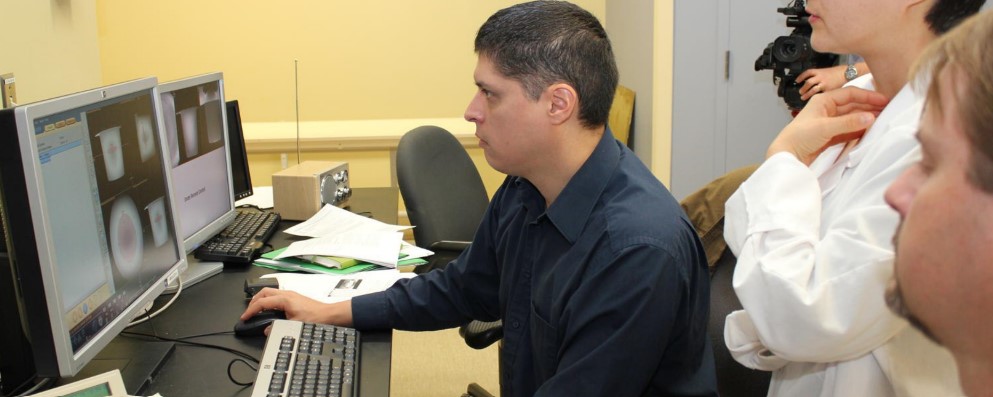Breakthrough application of ultrasound technology to diagnose and treat skin abnormalities
Medical ultrasounds have been used for therapeutic and diagnostic purposes since the 1950s. Their benefits to human body are well known and the biological effects continue to be studied around the world. The thermal and mechanical effects on live tissue can provide a more effective treatment than invasive alternatives in some chronic conditions such as prostate cancer.

At Dawn-Ross we are pursuing the application of ultrasounds for skin therapy approaches. With over 10 million biopsies being done yearly in the US alone our technology has a high impact capability and may revolutionize the diagnostics and treatment of a variety of skin abnormalities, including cancer.
What is ultrasound therapy?
It’s a non-invasive procedure that uses high-frequency sound waves to transfer energy to the tissues to produce desired effects. There are two types of therapeutic ultrasound: thermal and mechanical. Higher intensity and frequency promote heat production while lower settings induce cavitation and mechanical effects within the tissue cells.
How does the ultrasound affect the tissue?
The ultrasound energy is precisely centered on the targeted areas. This produces the desired biological changes by raising the skin temperature and by causing structural and functional changes to the damaged or cancerous tissue in a non-invasive manner. The selective targeting of only abnormal tissue is achieved by utilization of specific frequencies and amplitudes.
How can ultrasounds be used for diagnostics?
Since malignant cells do not respond as normal cells to the bioeffects caused by ultrasound, their response can be measured for diagnostic purposes. This novel application is a powerful alternative to invasive procedures such as biopsies.
How can ultrasound therapy be used to treat skin cancer?
Our research has demonstrated positive effects in lowering the count of malignant skin cells. Because the ultrasound affects the skin cell structure this treatment may reduce the chances of recurrence after treatment. Surface skin epidermal targets are particularly well suited for a low intensity ultrasound approach.
The History
In 2019 Dawn Crocker and Ross Harper initiated the Dermasound Project with the University of Calgary’s Ultrasound Lab. The first objective was to confirm the validity of the initial discovery, related to skin abnormality improvements after exposure to ultrasound. The second was the design of an emitter capable of treating a variety of skin conditions. This is the first of this kind of research, as ultrasound technology has not been examined for skin conditions therapy and diagnosis applications.
The Future
Dawn-Ross Inc. will continue to pursue more investigations on the mechanisms by which ultrasound interacts with tissues. The substantial enhancement of emitter resolution opened the door to a new field of possibilities, such as detecting and characterizing a variety of skin conditions in three dimensions. The object of the research will be: finding ways of producing a reflected wave as a source of information for complete diagnostics, without having to rely on biopsies.



Our Technology
The Dermasound Project
The major result of the collaboration with Calgary’s Ultrasound Lab researchers is a novel ultrasound emitter design, which yields a 10 fold improvement in the device’s targeting capabilities.
The greater accuracy will allow for more precise targeting in three dimensions. The re-engineering of the emitters’ geometry made possible uniform pressure coverage, even when applied do uneven body surfaces, opening the door to a possibility of using ultrasound technology for diagnostic purposes.
the new hand-held emitter can be used on any part of the body on pinpoint areas or for wide skin areas.
Focused ultrasound treatments with no incisions can be performed on an outpatient basis, resulting in minimal discomfort and few complications, allowing for rapid recovery. The company will be pursuing a patent application for the new geometry in 2024.